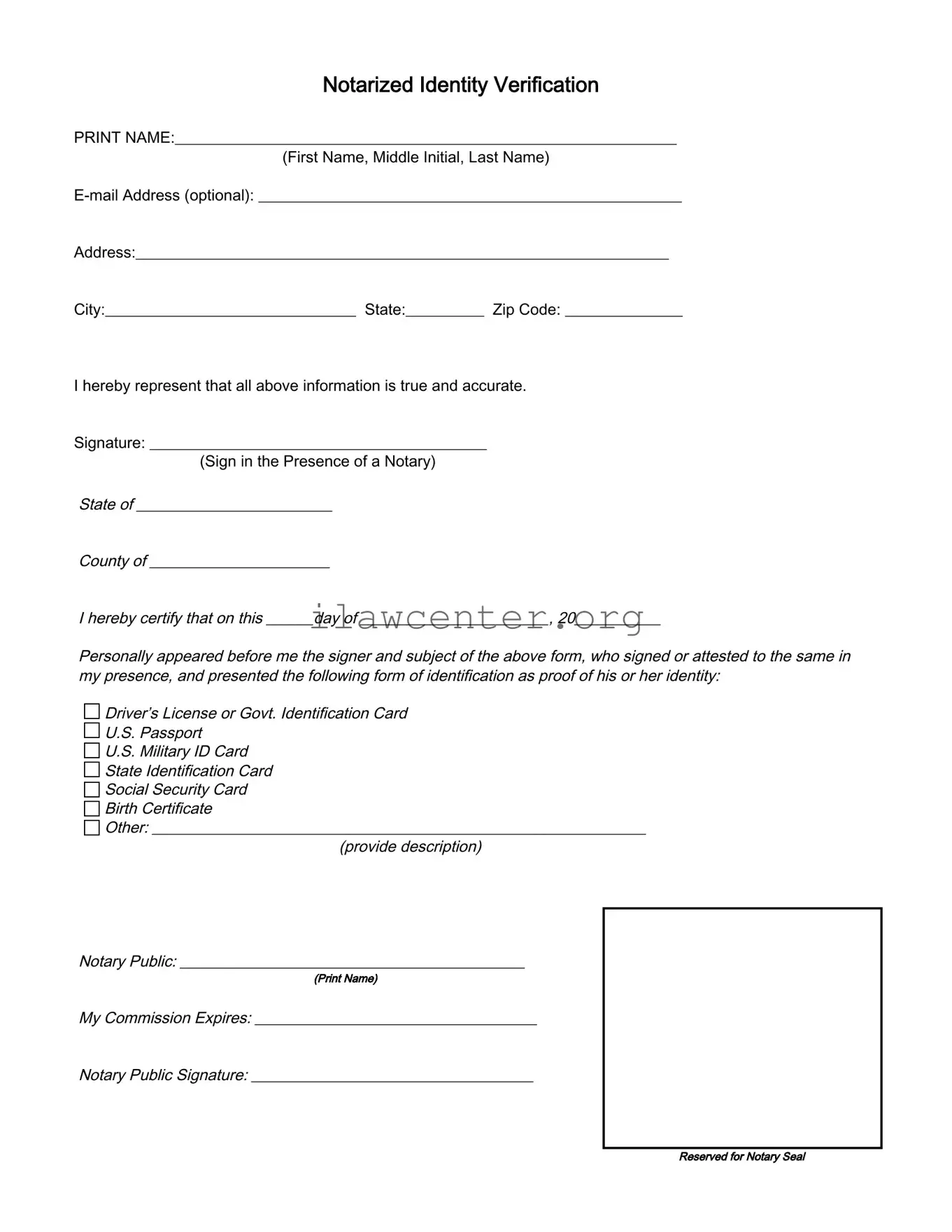Instructions on Utilizing Notarized Identity Verification
After completing the Notarized Identity Verification form, the next step typically involves submitting it to the necessary authority or organization requiring identity verification. Ensure that you keep a copy for your records. Below are the steps to guide you through filling out the form correctly.
- Begin by printing your name clearly in the designated space, including your first name, middle initial, and last name.
- If you wish, provide your email address in the optional section.
- Fill in your complete address, including street address, city, state, and zip code.
- In the statement that follows your address, confirm that all the information you provided is true and accurate. Your signature must be placed where indicated. Sign the form in the presence of a notary public.
- Indicate the state and county where the notary public will conduct their verification.
- On the line for the date, write the day, month, and year you are signing the document.
- When prompted, the notary public will confirm your identity. The notary will need to see and verify your identification. Choose from the acceptable forms and provide the necessary description if you selected "Other."
- Let the notary public fill in their details. They should print their name, provide the expiration date of their commission, and sign the form.
- Finally, ensure that the notary public applies their seal in the reserved space provided at the bottom of the form.



 Driver’s License or Govt. Identification Card
Driver’s License or Govt. Identification Card
 U.S. Passport
U.S. Passport
 U.S. Military ID Card
U.S. Military ID Card
 State Identification Card
State Identification Card
 Social Security Card
Social Security Card
 Birth Certificate
Birth Certificate
 Other: _______________________________________________________________
Other: _______________________________________________________________